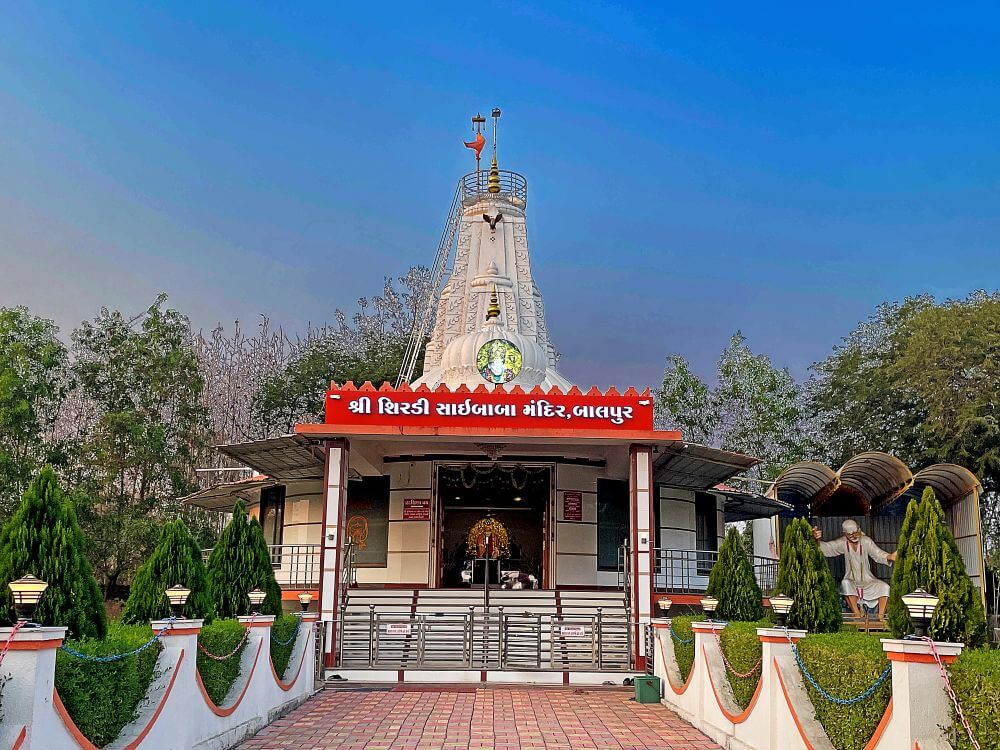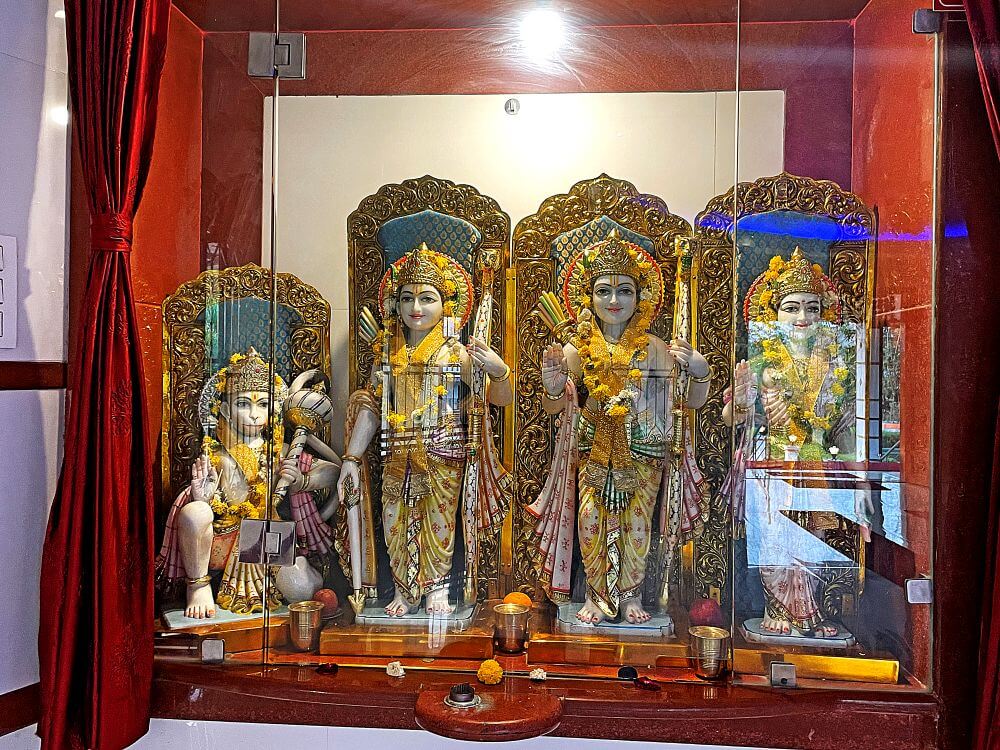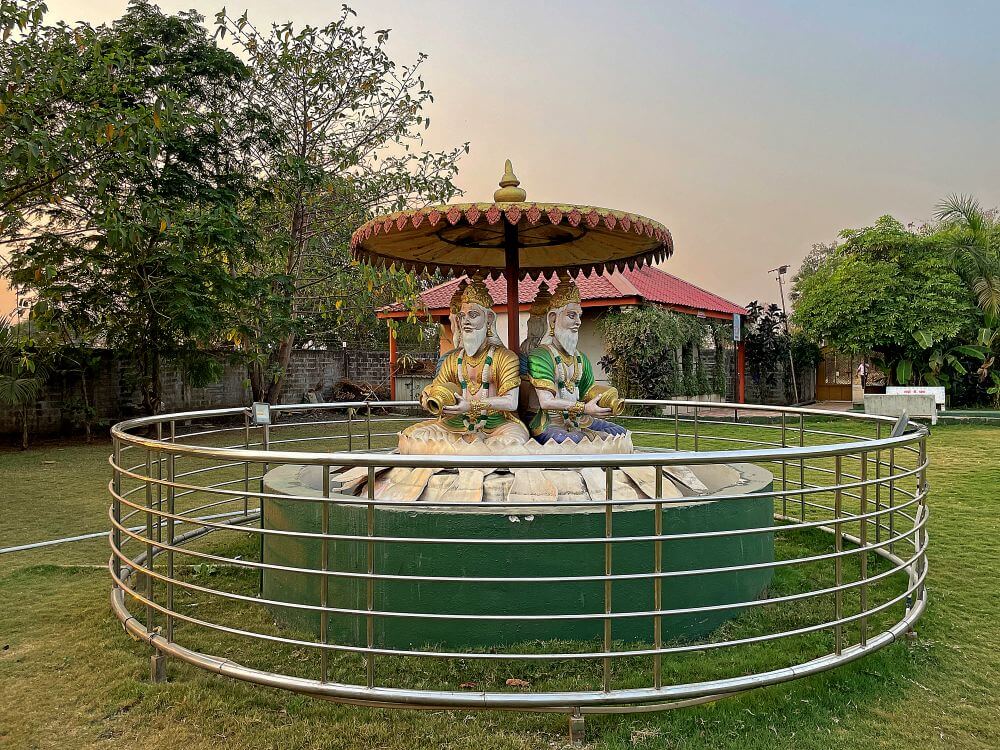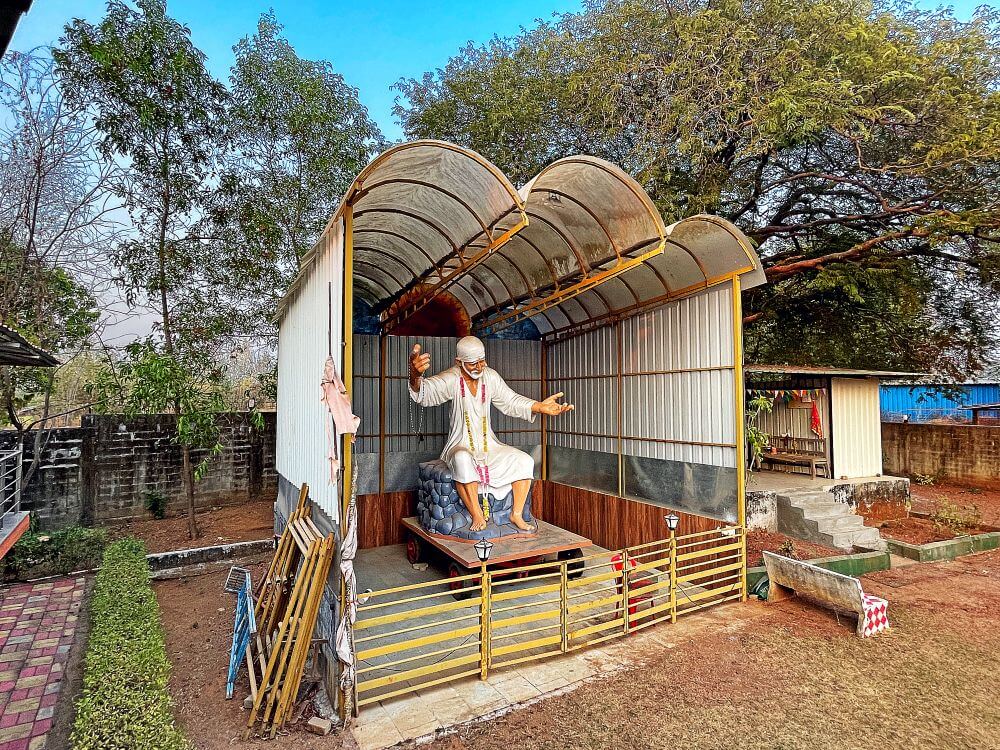
Sai Baba of Shirdi, a 20th-century saint, famously advocated the principle ‘Sabka Malik Ek’ (Everyone’s God is One), emphasizing religious tolerance and unity among all faiths, guiding followers to understand that all religions ultimately lead to the same supreme being. Millions from diverse faiths including Hinduism, Islam, Parsi, Sikhism and Jainism revere Sai Baba as a divine incarnation. Besides India, Sai Baba temples exist worldwide. The Sai temple in Balpur is one such renowned temple. Many devotees who cannot visit the Shirdi Sai Temple come to offer their respects at this temple.
Sai Baba is traditionally believed to have been born in 1838 at Pathri, in Maharashtra’s Parbhani district. This claim is supported by Sai Charitra, published in 1974, authored by Govind Raghunath Dabholkar, who personally spent time with Sai Baba. However, Shirdi’s Sai Sansthan maintains that Sai Baba’s exact birthplace remains unknown. Scholars in Pathri believe his original name was Haribhau Bhusari and his father handed him to a fakir in infancy. Sai Baba’s elder brother, also a fakir, greatly influenced him. At the age of eighteen, Sai Baba arrived in Shirdi, which became his karmabhoomi (place of action). He passed away here on October 15, 1918.
Sai Baba preached principles of devotion, patience, love, forgiveness, compassion and inner peace, gathering devotees worldwide.  In 1922, Ramchandra Madye Bua from Kudal Taluka in Sindhudurg district of Maharashtra first installed an idol of Sai Baba there. Then, in 1954, the idol of Sai Baba, which is still seated there today, was consecrated in the Samadhi Mandir at Shirdi. Following this, many idols of Sai Baba were established at various locations leading to the construction of several temples. Devotees from Balpur in Vyara Taluka also built a grand and beautiful Sai Temple a few years ago.
In 1922, Ramchandra Madye Bua from Kudal Taluka in Sindhudurg district of Maharashtra first installed an idol of Sai Baba there. Then, in 1954, the idol of Sai Baba, which is still seated there today, was consecrated in the Samadhi Mandir at Shirdi. Following this, many idols of Sai Baba were established at various locations leading to the construction of several temples. Devotees from Balpur in Vyara Taluka also built a grand and beautiful Sai Temple a few years ago.
The Sai Baba temple in Balpur is located in a tranquil area away from urban chaos. Entering through the spacious courtyard’s ‘Sitaram Dwar’ (entrance gate), visitors immediately notice the temple’s towering shikhara (spire). A straight path leads from the entrance to the temple, paved with paver blocks and flanked by beautiful gardens on both sides.  To the left along this path is a fountain where water flows from pots held by four sages seated on lotus flowers.
To the left along this path is a fountain where water flows from pots held by four sages seated on lotus flowers.
The temple is built on a high pedestal and consists of a darshan mandap (viewing area), sabhamandap (assembly hall), circumambulation path and garbhagriha (sanctum sanctorum). The darshan mandap features an amalaka-shaped dome while the sabhamandap has a dome-shaped shikhara. The main shikhara is tall and constructed in an Urushringa style with an amalaka atop it followed by a kalasha. Below the amalaka is a sculpture of Garuda with outstretched wings.
Visitors ascend approximately ten steps to enter the darshan mandap. There is a spacious wooden door leading into the sabhamandap where shiny marble flooring is laid throughout.  The ceiling of the sabhamandap features an octagonal chandelier surrounded by sculptures of celestial beings showering flowers.
The ceiling of the sabhamandap features an octagonal chandelier surrounded by sculptures of celestial beings showering flowers.
This temple houses one main sanctum and two sub-sanctums. In front of the main sanctum stands an elegant statue of Nandi on a marble pedestal with a tortoise positioned before it. The front part of the sanctum is open. Inside sits a marble statue of Sai Baba on a golden throne raised on a high platform; this idol resembles that found in Shirdi’s temple. The throne is beautifully decorated with intricate carvings. The idol wears a golden crown topped with an umbrella. Sai Padukas (footwear) are placed at some distance before it.
In the left sub-sanctum are marble statues adorned with garments depicting Lord Ram, Lakshman and Seeta on high pedestals.  To their left stands a graceful statue of Hanuman in a posture of reverence (Vandan Mudra). In the right sub-sanctum is an idol of Ganesh seated on a lotus flower with statues of Riddhi and Siddhi beside it.
To their left stands a graceful statue of Hanuman in a posture of reverence (Vandan Mudra). In the right sub-sanctum is an idol of Ganesh seated on a lotus flower with statues of Riddhi and Siddhi beside it.
To the left side of this Sai Temple lies ‘Dwarakamai’, which refers to the dilapidated mosque where Sai Baba resided in Shirdi. A sacred fire (dhuni) is always kept burning there. Similar to Shirdi, Dwarakamai has been recreated here as well. Inside this temple complex is a large wooden shrine featuring an oil painting of Sai Baba alongside space for dhuni.
Photographs of Sathya Sai Baba from Puttaparthi in Andhra Pradesh are also displayed here. Sathya Sai Baba (1926-2011), originally named Sathyanarayana Raju, claimed to be an incarnation of Sai Baba.
 In the courtyard adjacent to the main temple on its right side stands a large pavilion housing an impressive statue of Sai Baba seated on a rock. Nearby is another shed with trees where another statue of Sai Baba stands alongside idols of Jalaram Bappa and Ganesh.
In the courtyard adjacent to the main temple on its right side stands a large pavilion housing an impressive statue of Sai Baba seated on a rock. Nearby is another shed with trees where another statue of Sai Baba stands alongside idols of Jalaram Bappa and Ganesh.
The temple complex also includes enclosures for rabbits and birds as well as a children’s garden. Every day, hundreds of devotees visit this temple for darshan. Daily rituals include Kakad Aarti at 5:30 AM followed by bathing and abhishekam (ritual bathing) for Sai Baba’s idol. At noon at 12 PM there is midday Aarti while Shayan Aarti occurs at 5:30 PM in the evening. On Thursdays, there is usually a significant influx of devotees for darshan followed by Mahabhandara (grand feast) that evening. Every evening, attractive lighting adorns this temple complex.
